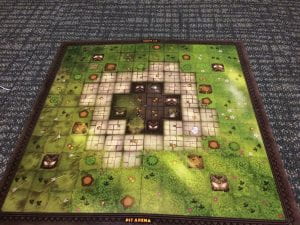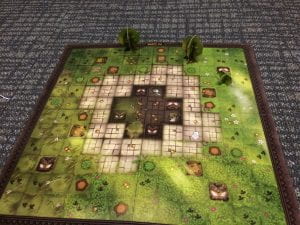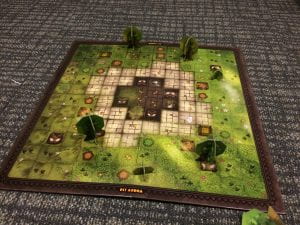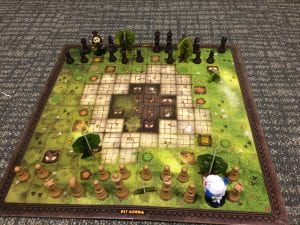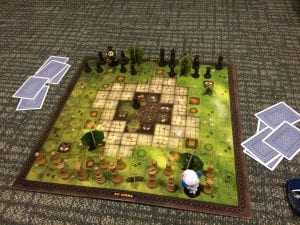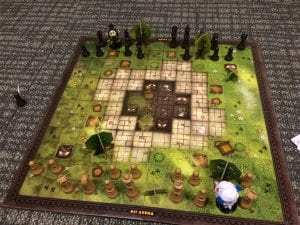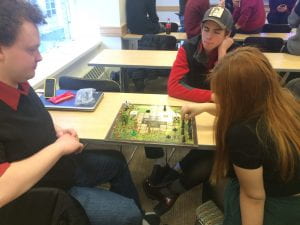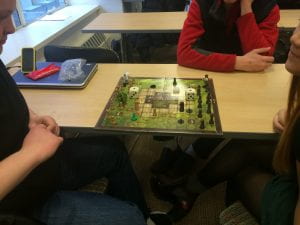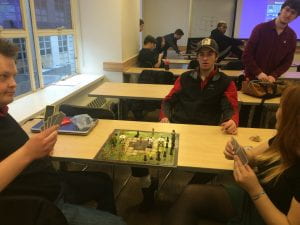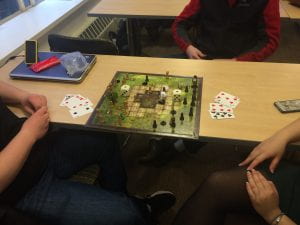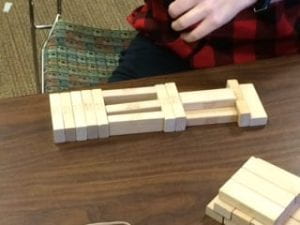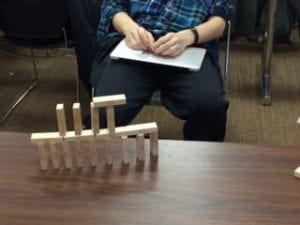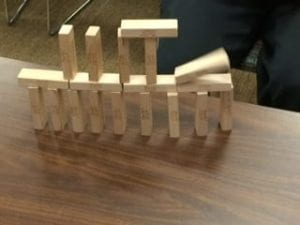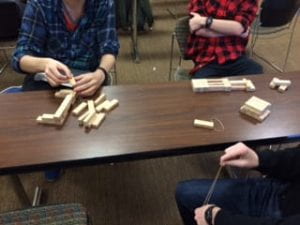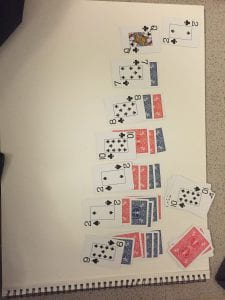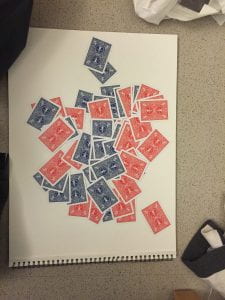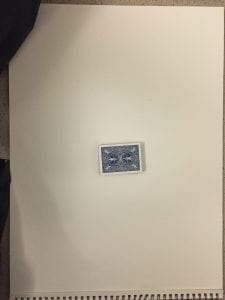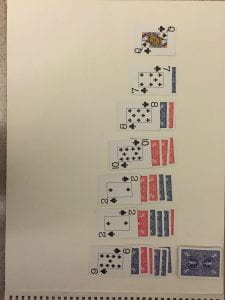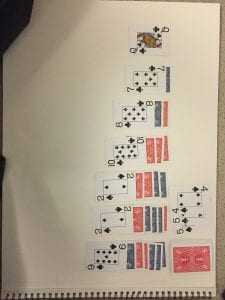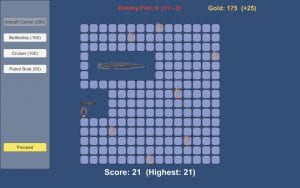Merchant and Thief
rip a page from your school book

Draw a 5×5 square grid as indicated prior
place five pen caps at each end of said grid, the two caps on the extremities need to be identical, one side will be the Thieves and one side will be the Merchant and Guards.
the five pieces will be explained:
Either move or Ranged attack
-The Archers 2hp: are situated on the extremities of each team, they can attack anything in a diagonal path but only cause 1 damage( every character only has 2hp) they move 1 square per turn.
– Shield master 2hp: Left of the king, he is the only character who can block arrows
– Great sword 3hp: on the right of the king, if damaged he attacks anything in a 1 square radius of him
Merchants:
-Merchant (king): moves 1 square per turn, can spawn a recruit every 2 turns (recruits are 1hp and only 1 square movement for 2 turns then choose what they become)
Thieves:
-King of thieves 2h: the king is the central cap on the board, he can move anywhere in a 3 space radius from him and if he doesn’t move when dealt damage at first exchange him for an archer on your team.
The reasons why i choose to make a game such as this because I feel like chess is a very timeless thing, there were some great chess champions at the time as well. The other reasons are that to play this game you are destroying a dada textbook( I think it would make some dada artists really happy). And thirdly i feel like making people make the game board and find the peases also resembles what Dadaists were trying to do


